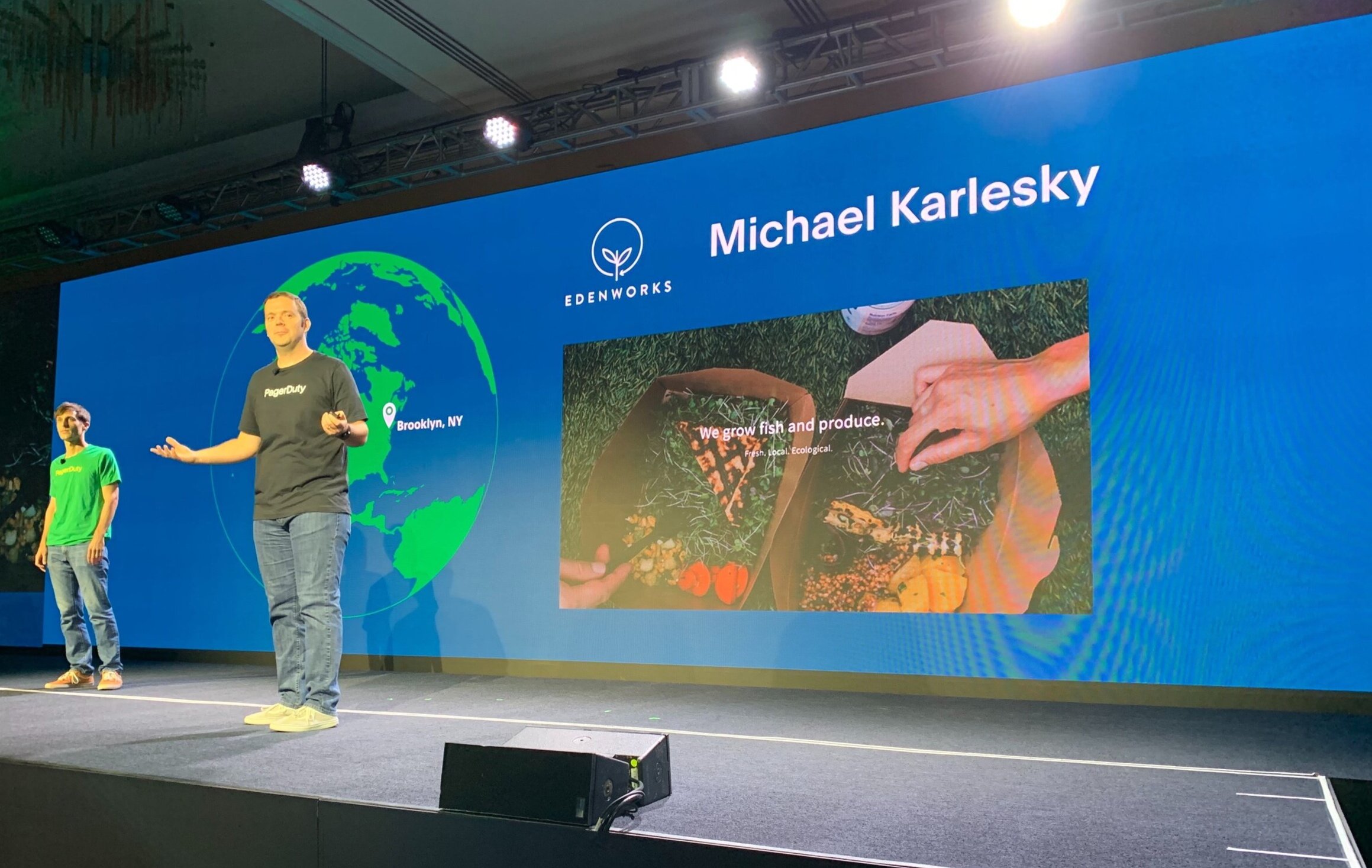Edenworks Indoor Farming: A Crop of Data
How do we harvest the right insights as we harvest our products?
Backstory
Microgreens growing in a pond within vertical racks
Upward Farms, an indoor vertical farming startup, began its life as Edenworks. Using aquaponics, the company grows fish that are the fertilizer source for microgreens. The fish grow in tanks, and the greens grow in a series of ponds stacked vertically in industrial racks. Bacterially produced, nitrogen-rich water circulates from fish to greens. This style of growing uses no artificial fertilizers or harmful insecticides, and the packaged microgreens are on store shelves as soon as within twenty-four hours of harvest.
Edenworks was an early stage startup. It was constantly growing — both literally as a farm and metaphorically as an organization. The Edenworks pilot facility and subsequent Upward Farms facilities were not only farms but also manufacturing facilities.
Note: For reasons of confidentiality this case study discusses only the long ago decommissioned Edenworks pilot growing system. Industrial versions of the components and systems in the Edenworks system have long since been replaced in the Upward Farms facilities.
Salmon seen through their tank’s window
With so many living things in an enclosed ecosystem and with so many operational processes, data was incredibly important. A core requirement was preventing mortality events. But, data also meant the opportunity for insights into quality issues, R&D projects, and optimized production.
I orchestrated the creation and operation of the data infrastructure for Edenworks’ many needs and various users. This work involved a team of four as well as a variety of sensors, embedded systems, enterprise & web applications, networks, databases, alarms, dashboards, analytics reports, and data exploration tools.
My work was expansive. This case study focuses on the environmental data system. Similar and interconnected business data, operational, and I.T. systems are not discussed here.
Work
My contributions to developing Edenworks’ environmental data infrastructure fell in four buckets:
Leading the Software & Electronics team
Strategy, user discovery, and requirements
Project management
Software development & hardware bringup processes
Team mentoring
Developing custom software
Interaction design + information architecture
Firmware for embedded hardware
Systems-level applications for data handling
System administration — Docker, Linux, NGINX, various web apps, OAuth2, etc.
Leading data and sensor systems operations and maintenance
Development:
FarmHand
Sensor node application — C++ on ATmega2560, i2c, RS485/Modbus, and MQTT with a telnet-based command line for sensor calibration and administration functions
Continuous Integration build system — Docker, Git, SCons, avr-gcc toolchain, valgrind, Google Test
Deployment system — Docker container generated by build system + avrdude + ser2net + USB
FarmManager — Hybrid local Linux + cloud-based data handling system
Custom components written in Go
Assembly of 15+ Docker containers for web apps, databases, backup, and monitoring systems
Farmbot — Slack-based app written in Go for system management and raw data queries
Django-based custom manual environmental measurements entry web app
InfluxDB-based time-series data handling stack
PagerDuty-based environmental and I.T. infrastructure alarms
Deadman alarms
Environmental conditions alarms
Power loss & 3 phase power disruption alarms
Internet connectivity alarm
FarmHand internal logging alarms
Grafana-based dashboards for production, testing, and calibration data
Power BI-based reports synthesizing business and environmental data
NGINX: Intranet, reverse-proxies for web applications, and OAuth2 access management via GSuite
Results
At its peak, the environmental data infrastructure I worked to produce processed 10 types of sensor readings at 50+ sites within the pilot facility yielding 10,000,000+ data points per month.
Farmers had alarms and dashboards to manage day-to-day work while the engineering and business teams had ready access to large volumes of data through further dashboards and reports. All users had access to a variety of web applications and data exploration interfaces.
We were invited to participate in the Beta of the InfluxData’s next generation of products. Similarly, because of our creative use of their product, PagerDuty highlighted Edenworks at their PagerDuty Summit 2019 (see gallery image) and co-authored a company blog post and an integration guide with me.
See the gallery below for some of the equipment involved, various software screenshots, and more.
Gallery
Open each image for a larger view and a detailed caption. The following depict only a portion of the larger data collection, analytics, and information technology systems touched on above.












